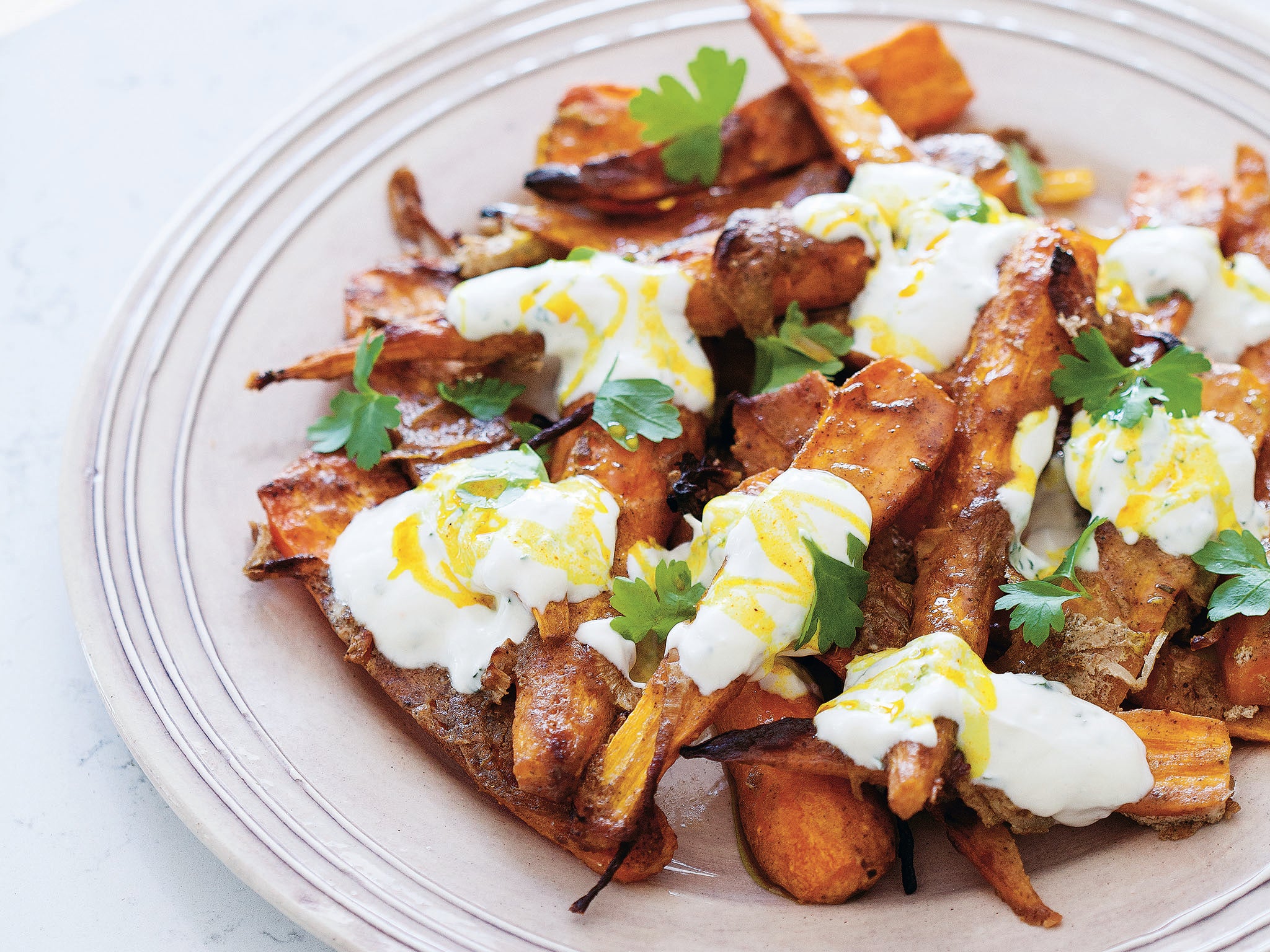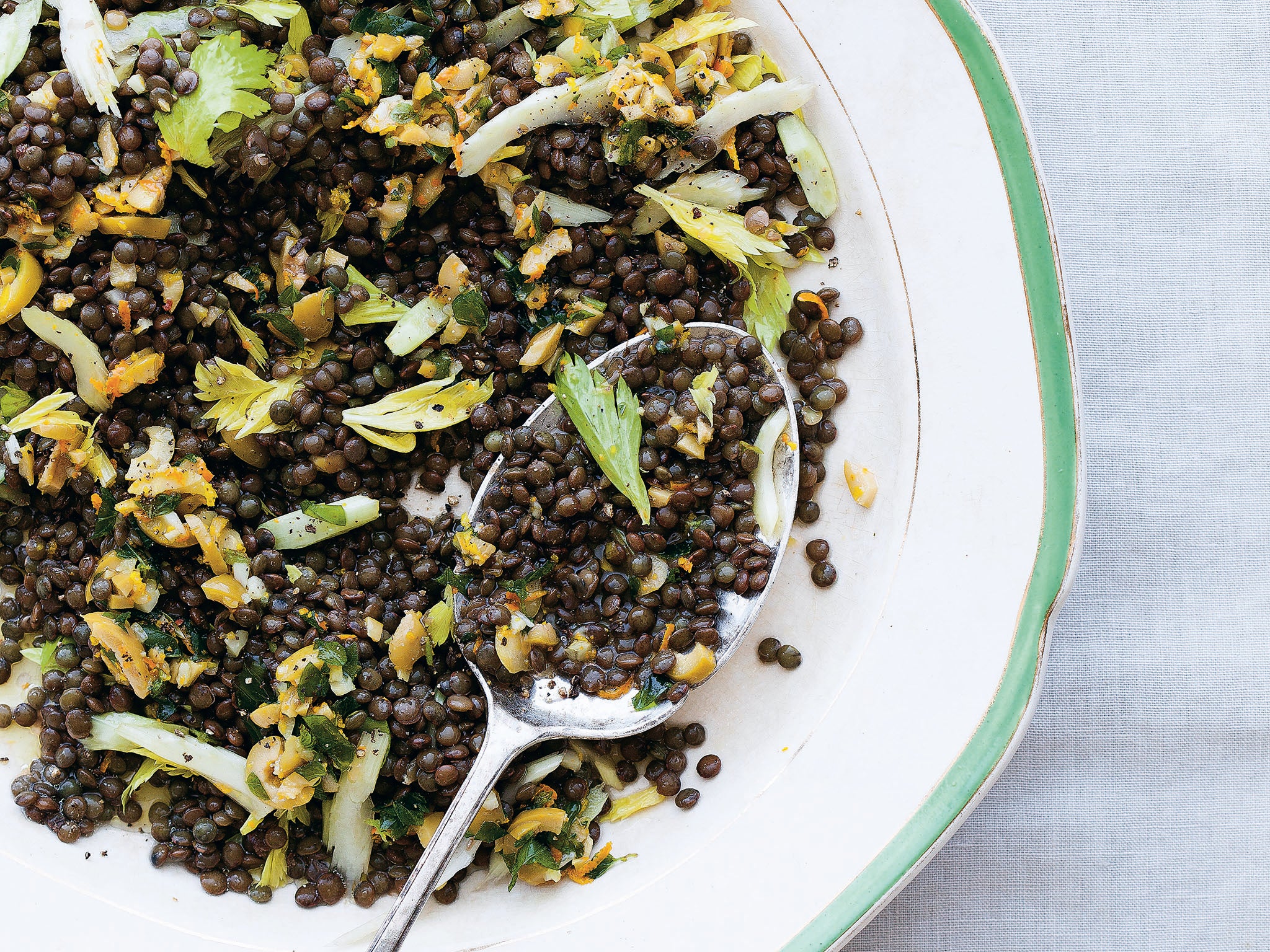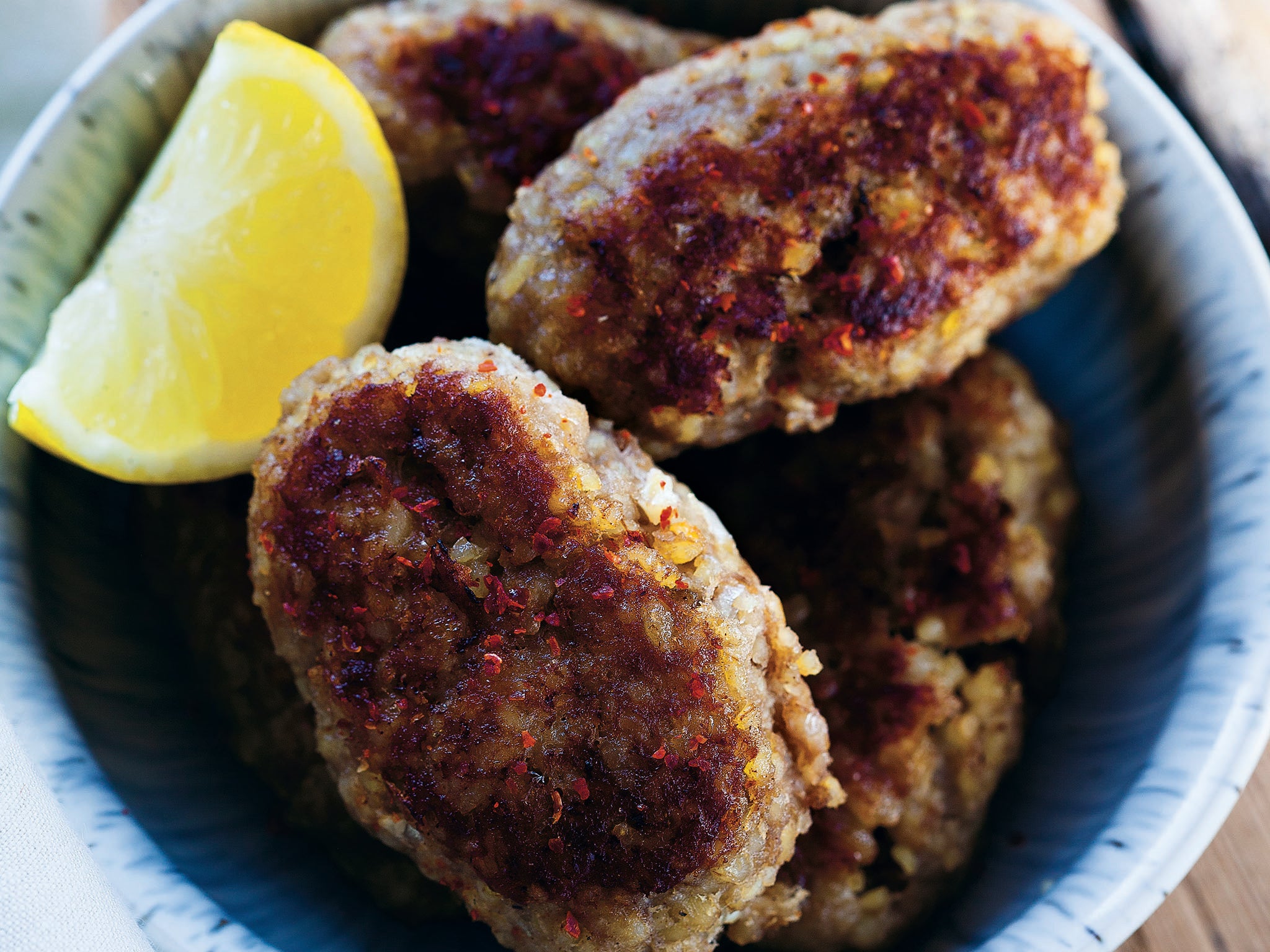The Art of the Larder
Claire Thomson’s new book aims to get readers into a “storecupboard state of mind” by guiding them in the ways of stocking up right. The following three recipes are made with pantry essentials plus a few other fresh ingredients

Yoghurt and garam slow-roasted carrots
Slow-roasting carrots in a garam-flavoured yoghurt makes for gorgeous spicy curds clinging to the cooked carrots. This dish looks incredible, with the turmeric oil giving a final ashy streak of colour. My fridge is never without yoghurt. I use it almost daily in many different ways. The turmeric oil is an arresting shade of deep yellow-orange and has a fantastic peppery, mustardy flavour.
2 tbsp garam masala
1 clove of garlic, crushed
200g Greek yoghurt
5 tbsp neutral oil
Salt and freshly ground black pepper
500g small to medium carrots, trimmed, scrubbed or peeled and halved lengthways
1 large onion, finely sliced
½ level tsp ground turmeric
Juice of ½-1 lemon, to taste
Small bunch of fresh coriander, leaves roughly chopped (use mint if you prefer)
Preheat the oven to 220C/fan 200C. Mix the garam masala with the garlic, half the yoghurt and half the oil in a large bowl and season with salt and pepper. Add the carrots and sliced onion and mix well to coat. Lay the coated carrots and onion on a roasting tray in a single layer and roast for about 25 minutes, or until tender and golden in places.
Meanwhile, add the turmeric to the remaining oil and heat in a small pan over a moderate heat for 1 minute. Remove from the heat and put to one side. Mix the lemon juice and remaining yoghurt with half the chopped herbs, and season with salt and pepper to taste. Place the cooked carrots (along with any caramelised bits from the pan) on a big plate. Dress with the yoghurt and turmeric oil and top with the rest of the chopped herbs.

Lentils with green olives, celery leaf, mint and orange
Serve these lentils with grilled mackerel, tinned fish, roast chicken or lamb, or mozzarella. They also make brilliant leftovers to shower over salads and pile on toast.
400g green or brown lentils
1 tsp salt
½ tbsp red wine vinegar
Grated zest and juice of 1 orange
4-5 tbsp olive oil
Small bunch of celery leaves, roughly chopped (use any pale stalks, finely chopped)
Large bunch of fresh mint, leaves roughly chopped
60g green olives, pitted and roughly chopped
Freshly ground black pepper
Rinse the lentils in cold water, then put them into a saucepan and cover with 1 litre of cold water. Bring to the boil, skimming off any froth that surfaces. Simmer for 20-30 minutes, until the lentils are cooked through but still with slight resistance. Add the salt 5 minutes before the end of the cooking time.
Drain the lentils and put them into a bowl. Dress the lentils while still warm with the red wine vinegar and the orange juice. Add the orange zest and olive oil, then the celery leaves, mint and chopped olives. Mix well and taste for seasoning. Serve just warm.

Lamb kibbeh
I’ve eaten these in northern Cyprus many times. In a cobbled market square, women stand under umbrellas in boiling summer heat, shaping the kibbeh and frying them in batches. Piled high and eaten just warm, these crisp, torpedo-shaped shells are filled with a spiced, fragrant filling.
For the kibbeh dough
150g fine bulgur wheat
250g minced lamb
½ tsp ground cinnamon
½ tsp ground allspice
Freshly ground black pepper (about ½ tsp), to taste
Salt (about 1 tsp), to taste
For the stuffing
1 onion, finely chopped
1 tbsp vegetable oil, plus extra for frying
150g minced lamb
¼ tsp ground allspice
¼ tsp ground cinnamon
1 tsp sumac
30g pine nuts (or finely chopped almonds)
Generous pinch of salt
To serve
Tahini sauce
Lemon wedges
Chilli sauce, optional
First put the bulgur into a bowl and cover with plenty of boiling water. When the bulgur is soft, after about 7 minutes, drain well, squeezing out as much water as possible. To make the stuffing, fry the chopped onion in 1 tablespoon of oil for 8-10 minutes, until completely soft. Add the lamb, spices, pine nuts and salt and cook for 5-10 minutes, until the meat is cooked through. Remove from the heat and set aside, checking the seasoning.
To make the kibbeh dough, use a food processor. Blend the softened bulgur with the raw mince, spices, pepper and salt to form a dough-like consistency. Remove and knead vigorously in a bowl or on a worktop. Place the kibbeh dough in the fridge, covered, for 30 minutes to firm up. Use wet hands to form kibbeh balls the size of a golf ball – roll it well in the palm of your hand to give a smooth surface. Using your thumb, make a hole in the ball to create a deep and even pocket in the kibbeh casing.
Fill the pocket with about 2 teaspoons of cooked lamb stuffing, closing it securely by squeezing the ends together. The kibbeh should be an oval shape with pointed ends. Set the kibbeh on a plate and continue the process until you have used all the dough and filling. In a non-stick frying pan over a moderate heat, add enough cooking oil to be at least 3cm deep. When the oil is hot, fry the kibbeh in batches until crisp and golden brown all over – about 6-8 minutes. You can deep-fry the kibbeh if you prefer.
Serve hot or even just warm at room temperature, with the tahini sauce and lemon wedges. Chilli sauce is good with them too.
The Art of the Larder by Claire Thomson, published by Quadrille, £20, photography by Mike Lusmore
Join our commenting forum
Join thought-provoking conversations, follow other Independent readers and see their replies
Comments